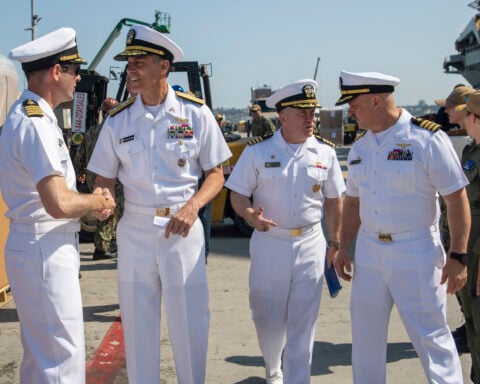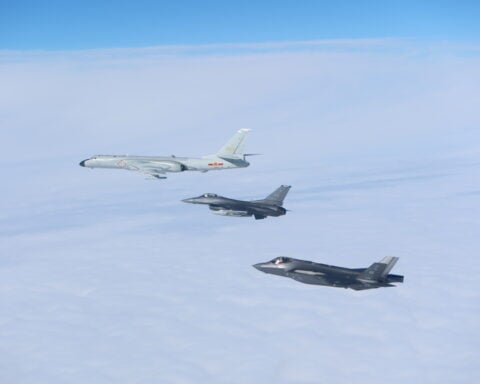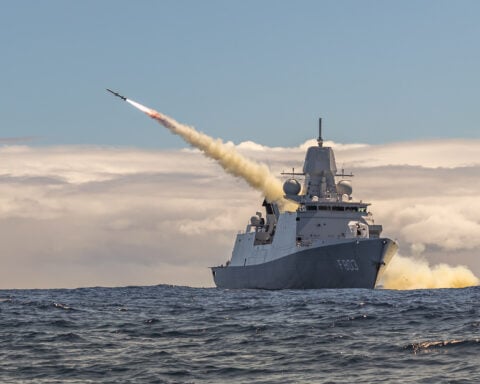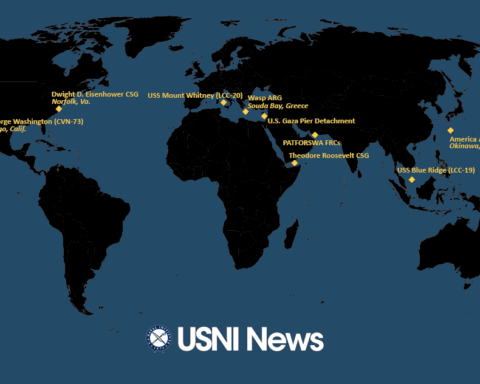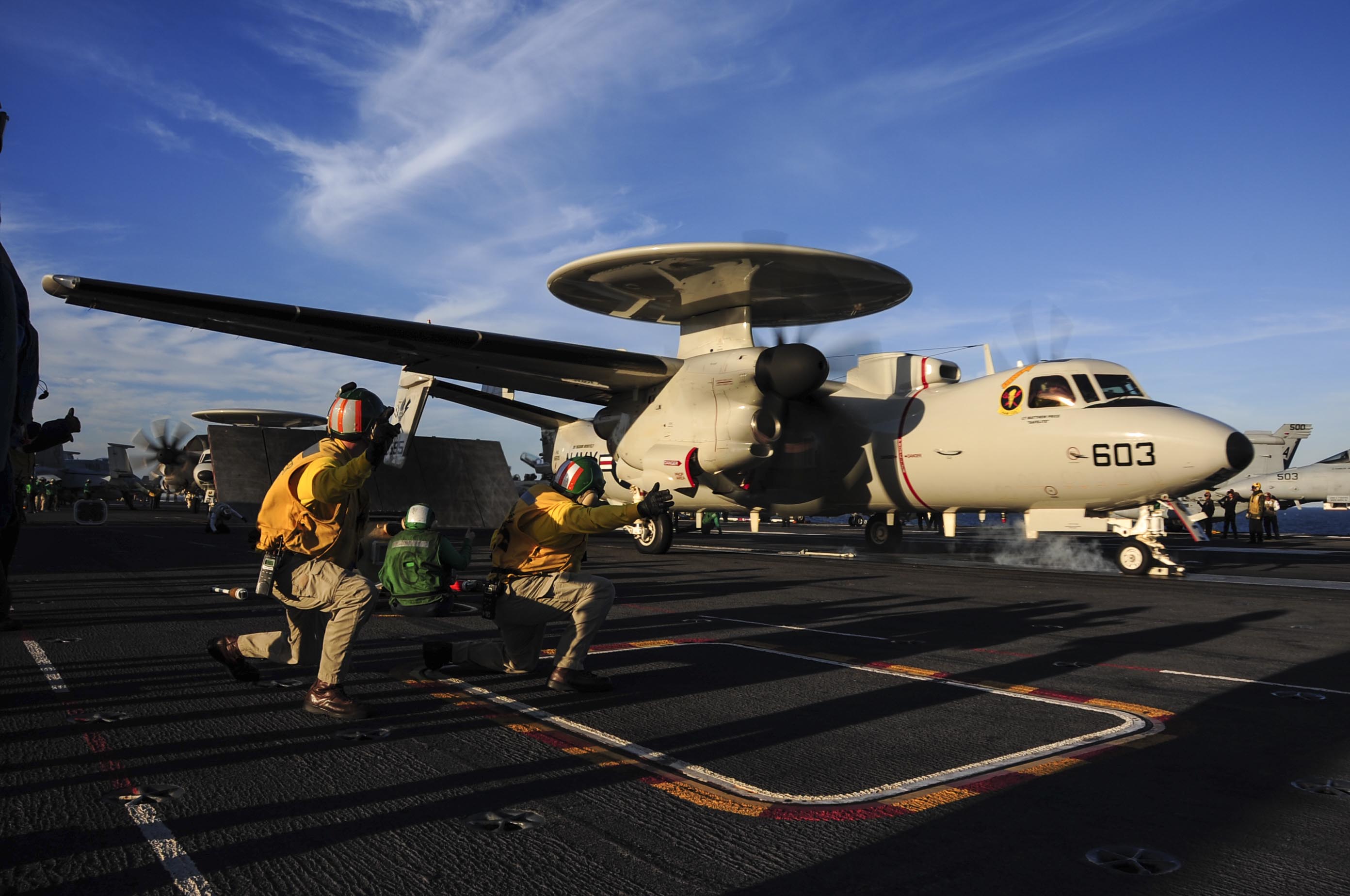
NAVAL STATION NORFOLK — The U.S Navy has declared initial operational capability (IOC) with the Northrop Grumman E-2D Advanced Hawkeye. The first operational squadron to fly the new airborne early warning aircraft is Carrier Airborne Early Warning Squadron VAW-125 based at Naval Station Norfolk, Va.
“The commodore declared IOC last week,” said Capt. John Lemmon, Naval Air Systems Command’s program manager for the E-2D effort on Thursday.
Capt. Drew Basden, commodore of the Navy’s airborne command and control wing, indicate that he signed the aircraft into IOC on Oct. 9—but dated the document Oct. 10.
The IOC declaration was based on the fact that the Navy has five operational aircraft available for deployment on USS Theodore Roosevelt (CVN-71) in 2015.
Right now, the service has 15 E-2Ds with an additional aircraft to be delivered imminently. Another 50 E-2D aircraft are on order and the Navy ultimately hopes to buy 75 of the aircraft by 2027. The E-2D will completely supplant the older E-2C models by then.
For the Navy, the E-2D is a particularly important platform. The aircraft is the central node of the services Naval Integrated Fire Control-Counter Air (NIFC-CA) construct.
The Theodore Roosevelt Carrier Strike Group has been billed by the service as the as the NIFC-CA capable CSG.
Earlier in year, the Navy demonstrated the NIFC-CA capabilities of the new Lockheed Martin-built APY-9 UHF-band radar using the Link-16 and Cooperative Engagement Capability (CEC) data-links to provide off-board targeting for the Boeing F/A-18 and Aegis warships firing Raytheon Standard SM-6 surface-to-air missiles.
In the future, the E-2D will be equipped with the power Tactical Targeting Network Technologies (TTNT) data-link that provides massively increased bandwidth and range. The Navy is working on integrating the new data-link on the E-2D over the course of the next year, Lemmon said.
Meanwhile work continues on integrating an aerial refueling capability on the Hawkeye. Lemmon said there was a preliminary design review for the in-flight refueling capability. The capability should be operational on the E-2D in 2020, he said.


